The Gigabyte UD1000GM PG5 1000W PSU Review: Prelude to ATX 3.0
by E. Fylladitakis on June 23, 2022 8:00 AM EST- Posted in
- Cases/Cooling/PSUs
- PSUs
- Gigabyte
- 1000W
- 80Plus Gold
- ATX v3.0
- 12VHPWR
Cold Test Results (~24°C Ambient)
For the testing of PSUs, we are using high precision electronic loads with a maximum power draw of 2700 Watts, a Rigol DS5042M 40 MHz oscilloscope, an Extech 380803 power analyzer, two high precision UNI-T UT-325 digital thermometers, an Extech HD600 SPL meter, a self-designed hotbox and various other bits and parts. For a thorough explanation of our testing methodology and more details on our equipment, please refer to our How We Test PSUs - 2014 Pipeline post.
GIGABYTE’s UD1000GM PG5 obviously earned its 80Plus Gold certification rating with an AC input of 115 VAC. It is not required for a product to meet the certification requirements for any given input voltage and most manufacturers do seek to meet the requirements at 115 VAC, where the requirements are substantially lower and it is therefore easier for them to be certified. The UD1000GM PG5 has an average nominal load range (20% to 100% of the unit's capacity) efficiency of 91.1% when powered from a 230 VAC source, which drops down to 89.5% when powered from a 115 VAC source. It fails to meet the half-load 92% efficiency requirements of the 80Plus Gold certification when powered by a 230 VAC source but does meet the agency’s requirements for a 115 VAC input – even if only barely.
The GIGABYTE UD1000GM PG5 has a semi-passive thermal control circuitry, meaning that the fan will not operate when the unit’s load is very low. The fan will start when the load is a little under 300 Watts. While the internal temperature of the PSU remains reasonably low at all times, the fan becomes clearly audible at half load and downright loud once the unit is loaded, reaching its maximum speed at 90% load with the unit operating at room temperature.


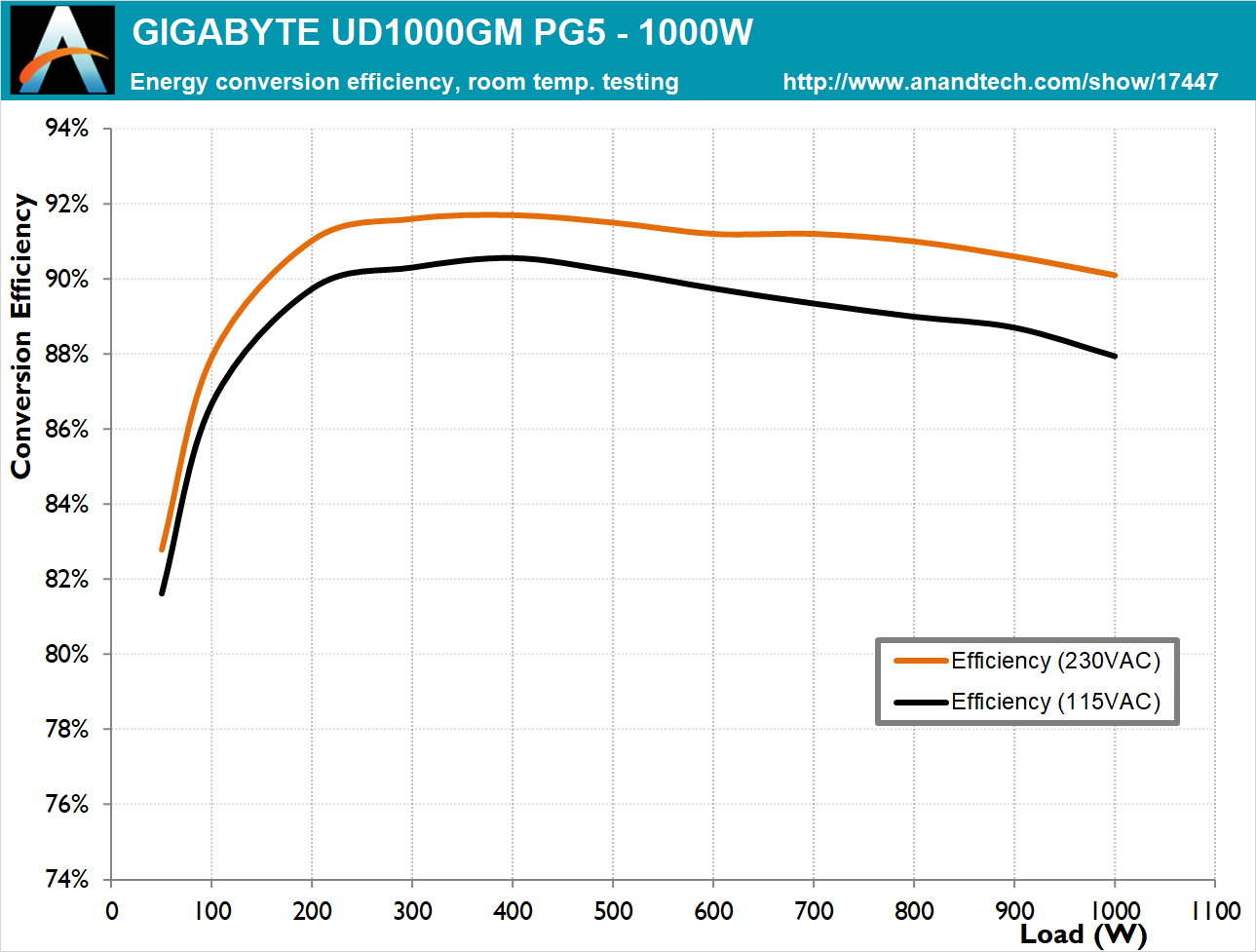
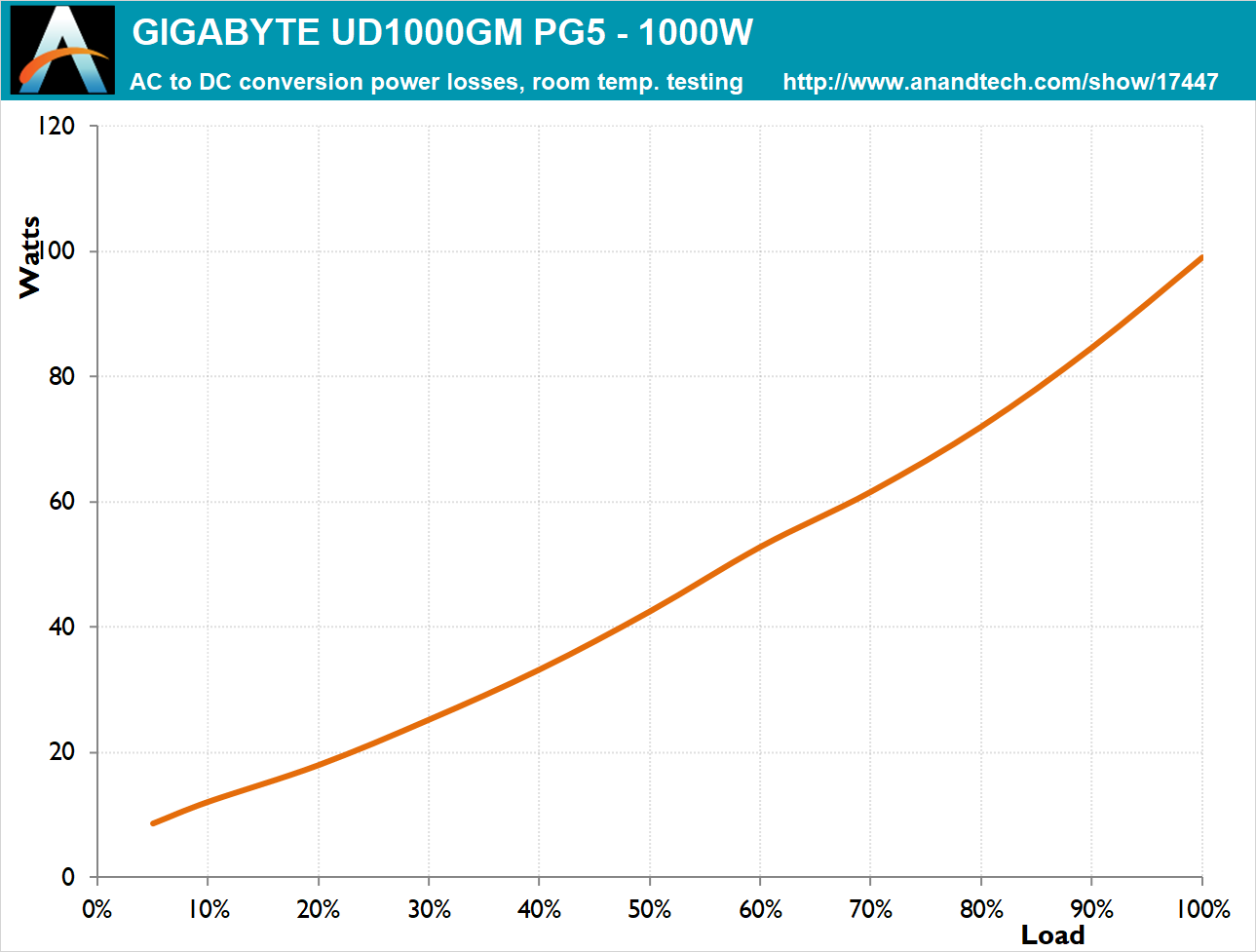
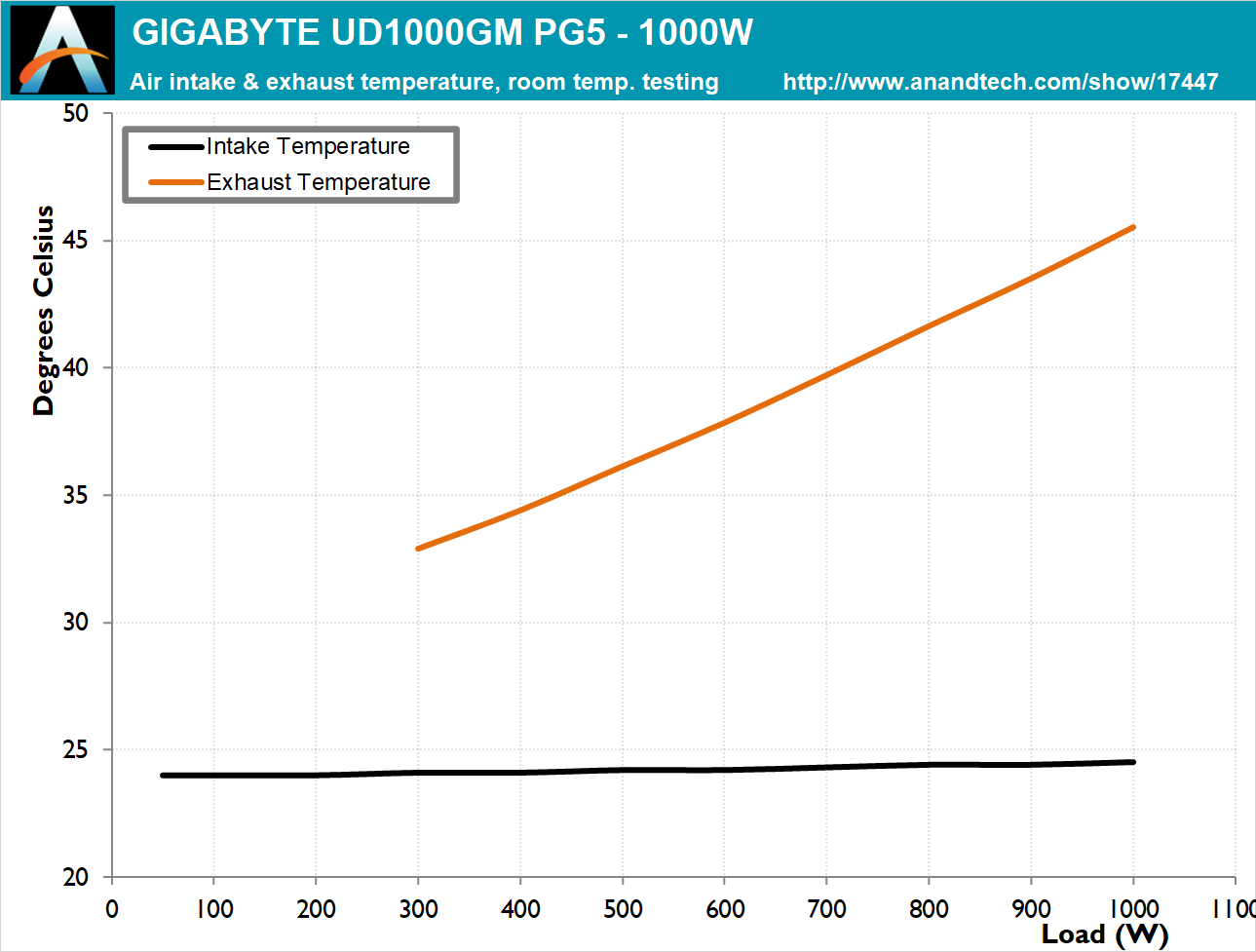
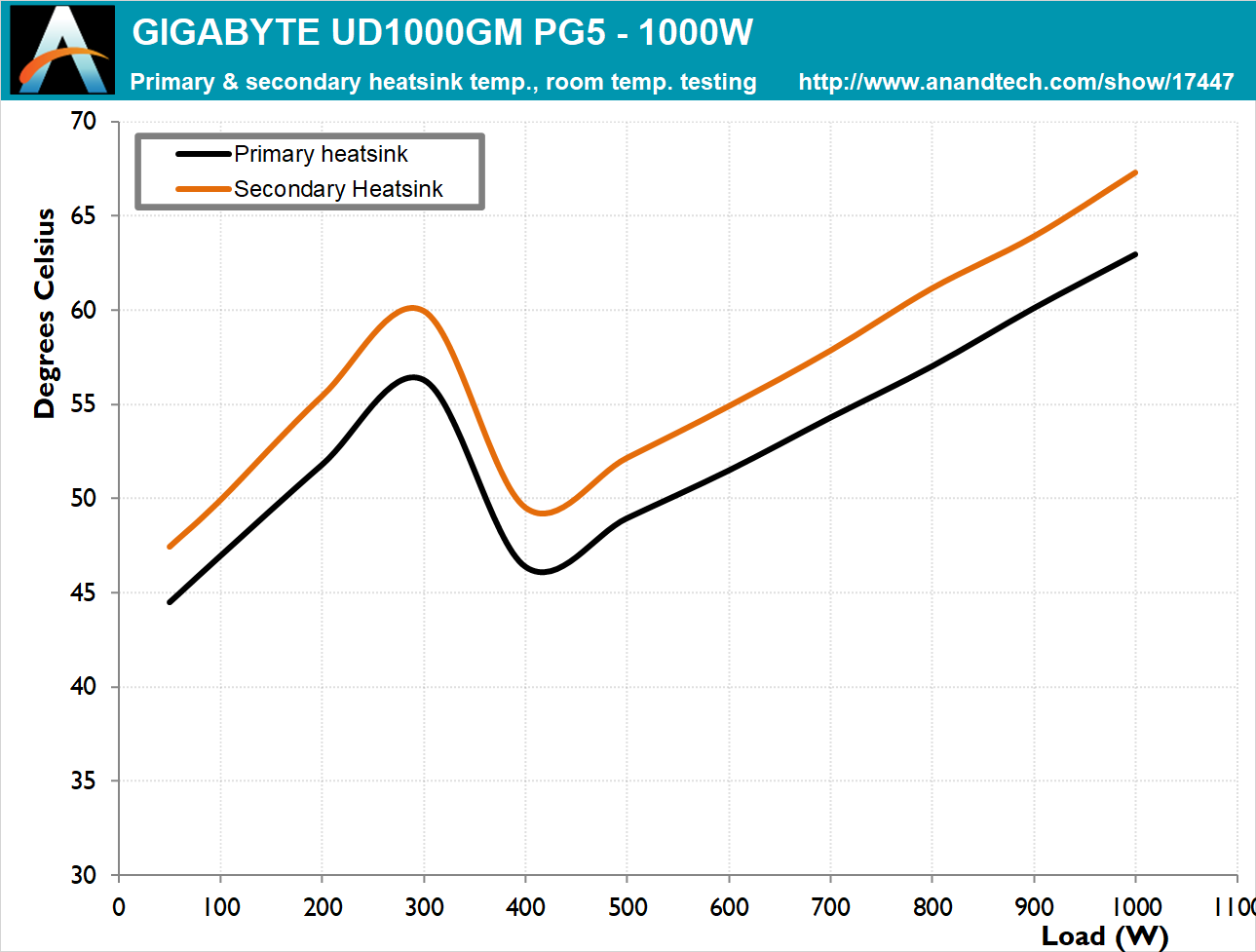
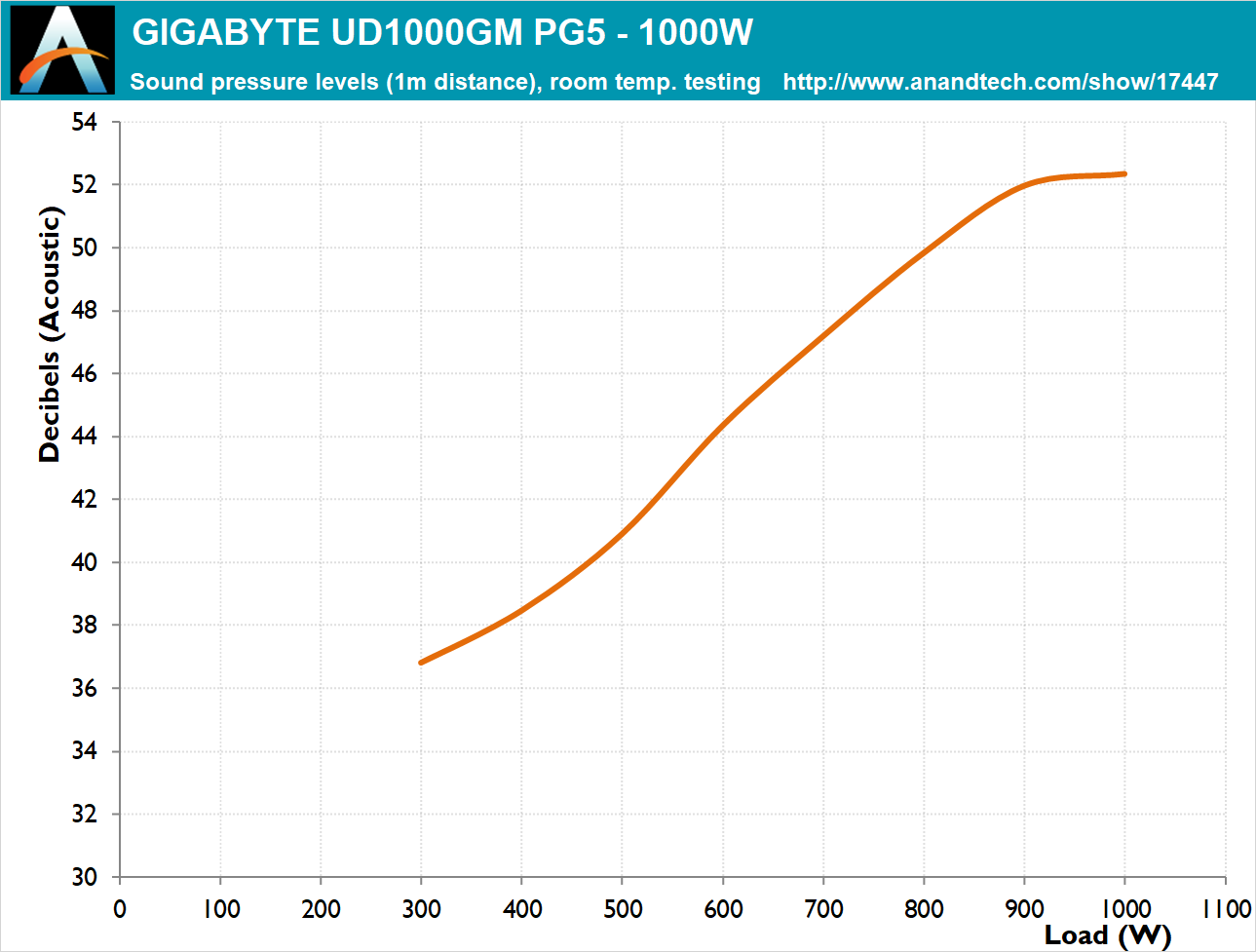








49 Comments
View All Comments
StevoLincolnite - Thursday, June 23, 2022 - link
Yeah, not much comment from Anandtech, they used to be the leaders in this field... But it seems more convenient and easier to just get information from a select few Youtube channels than this site now.DigitalFreak - Friday, June 24, 2022 - link
AT hasn't done this in years. The last thing I remember them doing like that was exposing SSD vendors (OCZ?) for switching to lower performing parts while not updating the model number.GN is the go-to site for this stuff now.
LordSojar - Saturday, June 25, 2022 - link
You might enjoy this, then.https://cultists.network/140/psu-tier-list/
29a - Thursday, June 23, 2022 - link
How about not going so heavy on the acronyms. It really helps to write the whole thing out the first time you use it.mode_13h - Thursday, June 23, 2022 - link
You mean like APFC and MOSFET? I feel you, but then again even writing them out wouldn't help without a proper explanation, which could turn into quite a digression. At that point, people are really just better off looking up those terms themselves, so they can get the appropriate level of understanding they seek.DanNeely - Friday, June 24, 2022 - link
If written, such definitions should be put in a boilerplate "how we test" page that gets included with each article. Available for anyone new, but not a bother for the rest of us since we can just skip over it.mode_13h - Friday, June 24, 2022 - link
Yeah, I've seen Toms Hardware have explainer articles, which are then linked from the relevant reviews. That would be a way to provide background, without cluttering up the actual review.Because, at some point in time, everyone needed/needs to learn what PFC is and why it matters. Plus, it's a cheap way to get another article & more page views.
meacupla - Friday, June 24, 2022 - link
If you don't know the acronym, you might as well look it up.If you've never heard of the acronym in the first place, there is a high chance that you wouldn't understand what it does, just from the string of words the acronym is made from.
This applies to most electronic/computer acronyms.
Khanan - Thursday, June 23, 2022 - link
Aside from the loud fan it seems to be good enough.Techie2 - Thursday, June 23, 2022 - link
I used a lot of Gigabyte Durable mobos over the years with excellent success. When they failed to upgrade their VRM design to handle AMD's 8-core CPUs and the VRM would overheat and throttle the CPU frequency/performance I notified Gigabyte constantly for almost a year. They proceeded to tell me I was wrong even though reports started showing up in mobo forums all over the net confirming the problem with the heavy power required for the 8-core AMD CPUs. So I discontinued using Gigabyte mobos since I could not rely on them to be reliable and properly engineered for the application. Some two years later they finally upgraded the VRMs for the defective mobos but they never replaced or recalled the defective ones they sold.From this review it looks like this is another "price point" product as sold by any number of PSU purveyors instead of a true premium quality, long-life design that most folks building high end PC systems would desire. I'll pass on this and the many cookie cutter products dumped into the marketplace by companies looking to boost their profits by sticking their name on a mediocre product that they don't even produce. There is a lot of badge engineering for profit these days.